Related Content
Content

Share
The location of Liverpool Street by London's business district leaves little room in the area around the station for tourist destinations.
Although it is the closest station to Spitalfilels Market which is particularly popular at weekends.
So you will be taking public transport on to all other popular tourist destinations in central London, when arriving at Liverpool Street by train.
Hence using my insights from being a Londoner, who frequently has to plan trips around the city centre for someone who prefers to avoid using stairs, to come up with this guide to accessing London’s most popular tourist attractions from Liverpool Street station.
The focus is on what’s easiest, so where relevant alternative step-free routes have been included; though comparatively few Underground stations in central London have step-free access by lift (elevator) between the trains and the streets.
At weekends the Underground lines and both the Elizabeth line and Thameslink trains can be impacted by construction work, those affecting the Underground and Elizabeth line trains can be looked up here, while those impacting the Thameslink trains, can be found here.
Accessing the Underground and Elizabeth line
Liverpool Street is served by the Central, Circle, Hammersmith & City and Metropolitan lines.
There is an obvious entrance to the Underground station shared by all the lines, as well as the Elizabeth Line, on the mainline station concourse; its opposite platforms (tracks) 3 – 6.
The primary access from the main concourse into this Underground ticket hall is by using a short flight of stairs, but an elevator is also available to the left of these stairs.
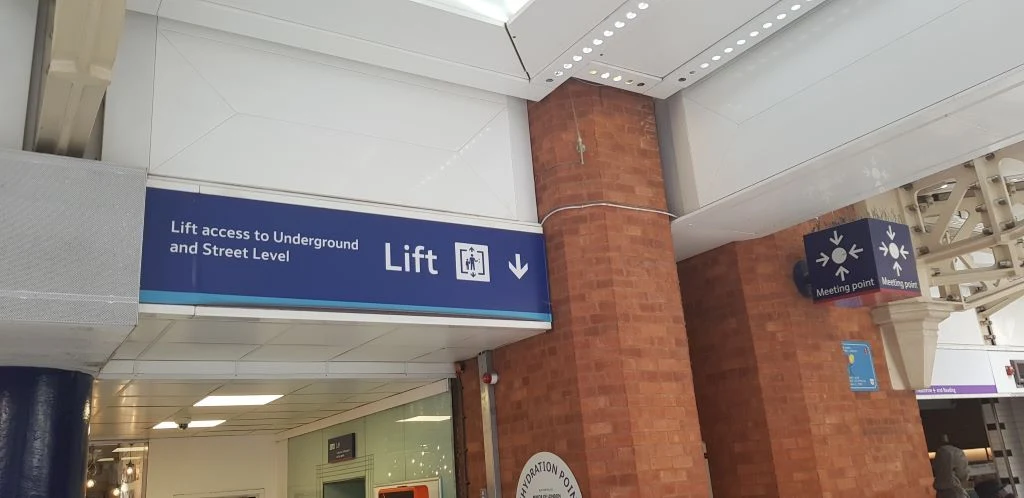
On the other side of the ticket barriers, the access to the Elizabeth line is a short walk away over to the right, where an escalator...
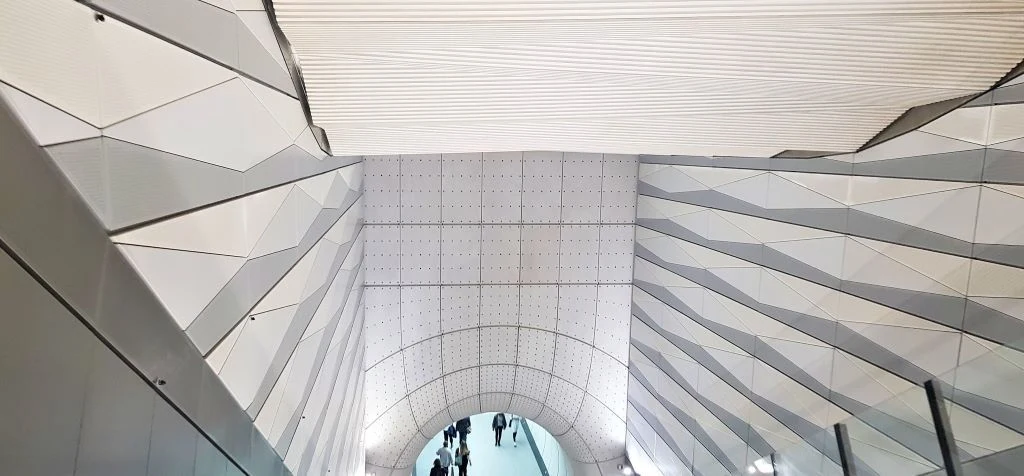
... and a lift (elevator)...
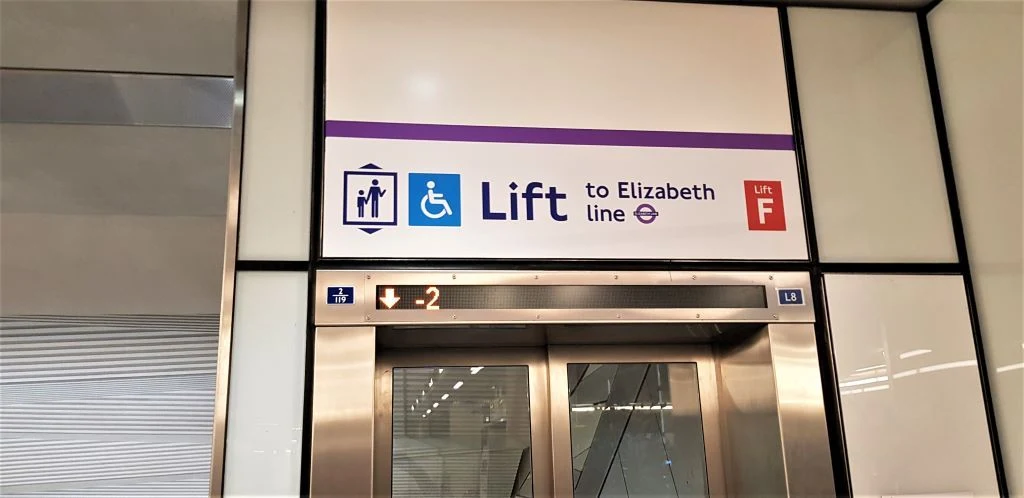
... lead down to the trains.
Though if your train to London will be calling at Stratford, then connecting there into the Elizabeth line, for onward journeys into central London, will be easier than at Liverpool Street.
Other escalators lead down to the Central line, but the Circle, the Hammersmith and City and the Metropolitan lines, all share an older part of the station.
The platform that these lines use when travelling eastbound is on the same level as the Underground ticket hall, the platform is steps away from the ticket hall.
Though a quirk of how the Underground was constructed is that the Circle lines which travel 'eastbound' from here will make a U-turn so that they will then travel west through London along the north bank of The River Thames; they initially head east to Aldgate.
The other platform in this part of the Underground station, used by the westbound Circle, Hammersmith and City and Metropolitan lines, doesn't have step-free access as a footbridge within the station has to be used to reach it.
to the British Museum
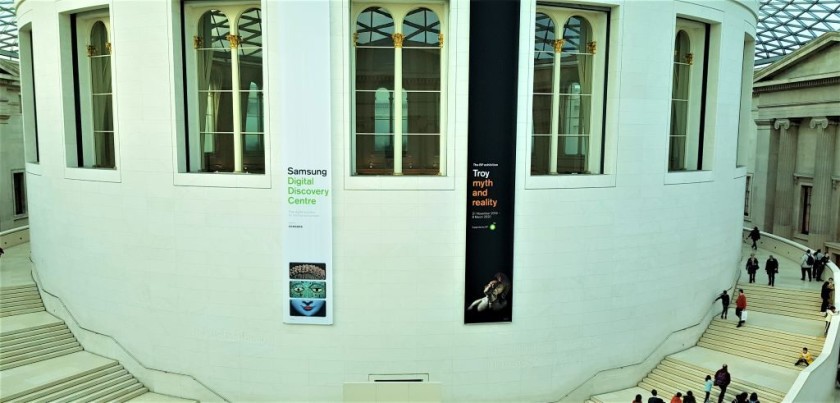
The easiest public transport option for travelling to The British Museum from Liverpool Street is to take a westbound Elizabeth line train to Tottenham Court Road.
to The Natural History Museum, The Science Museum and The V&A Museum
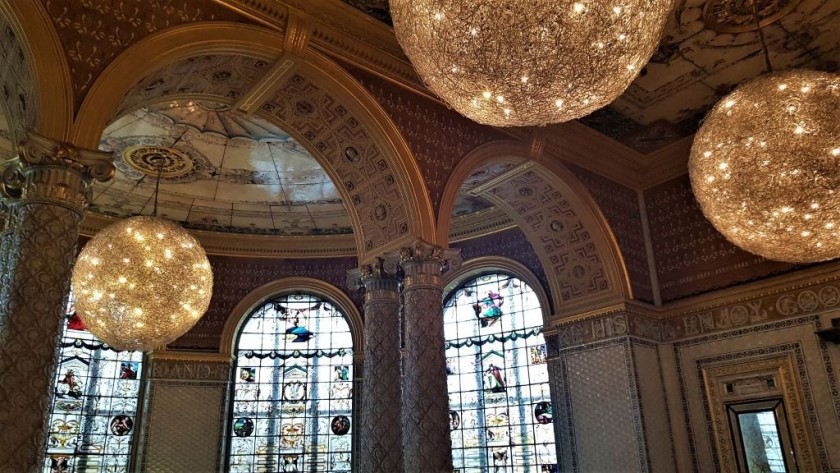
The Natural History Museum and The Science Museum and The Victoria and Albert Museum are all located on the aptly named Exhibition Road in South Kensington.
These museums are a five minute walk north of South Kensington underground station, through a subway which leads off from the ticket hall.
The eastbound Circle line is direct, but South Kensington station is on the opposite side of the city centre, so it’s a 13 stop journey and the Circle line trains aren’t particularly frequent.
Hence a westbound Central line train to Holborn and transferring there to a westbound Piccadilly line train to South Kensington, usually being a quicker option.
to Trafalgar Square
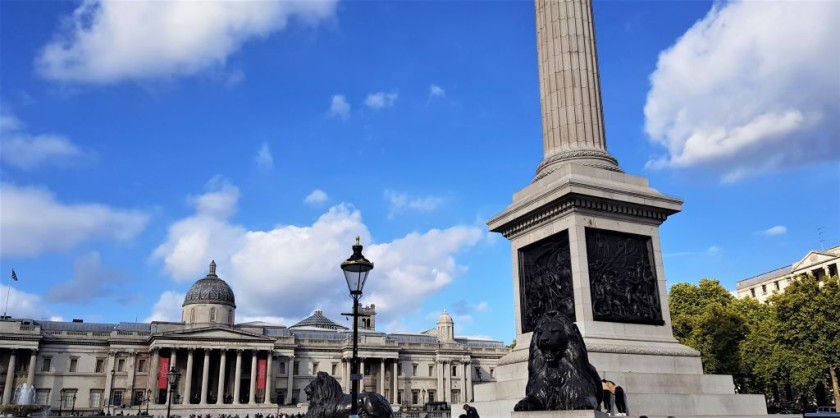
Trafalgar Square is the location of The National Gallery and the separate National Portrait Gallery, plus Horse Guard’s Parade and The Churchill War Rooms, which is just off The Mall, are within a few minutes walk.
Though there are several options for accessing the area from Liverpool Street due to the comparatively long distance.
(1) take the eastbound Circle line to Embankment station, though it is a 5 -10 min walk from Embankment to Trafalgar Square.
(2) Though if you’re heading to the galleries take a a westbound Elizabeth line train to Tottenham Court Road and connect there for the southbound Northern line to Leicester Square, and walk for three minutes down Charing Cross Road.
(3) or take bus route 26.
to The South Bank
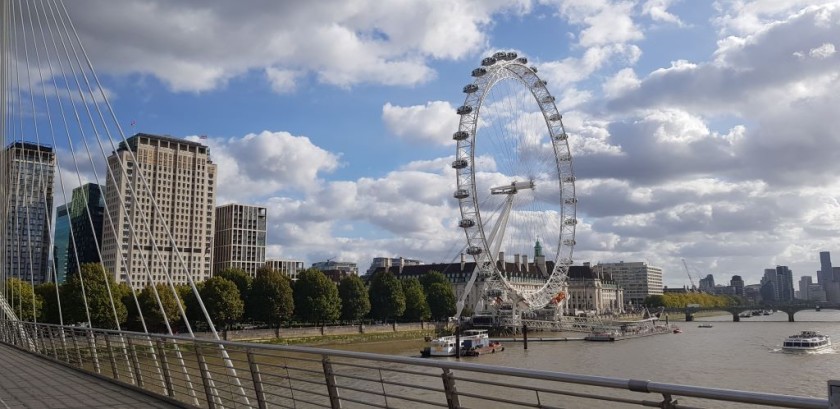
A clutch of tourist destinations are located on the south bank of the River Thames between Waterloo and Westminster Bridges.
They include The London Eye and The Sea Life London Aquarium and The London Dungeon and The South Bank Centre including The Hayward Gallery.
For a Liverpool Street to Waterloo journey the logical option is seemingly making the transfer between the westbound Central line and the Waterloo & City line at Bank station, but the interchange there is comparatively awkward.
So the new, easier option is to take a westbound Elizabeth line train to Tottenham Court Road and then make the transfer there into southbound Northern Line train train.
Waterloo underground station is within a five minute walk of all these attractions, though the station has multiple exits, so take your time and use the maps and signs, so that you can use the exit with the easiest access to where you will be heading.
However, if your train heading to Liverpool Street calls at Stratford, a good option is to transfer to the Jubilee line at that station, because the Jubilee line serves Waterloo.
to the Tower Of London
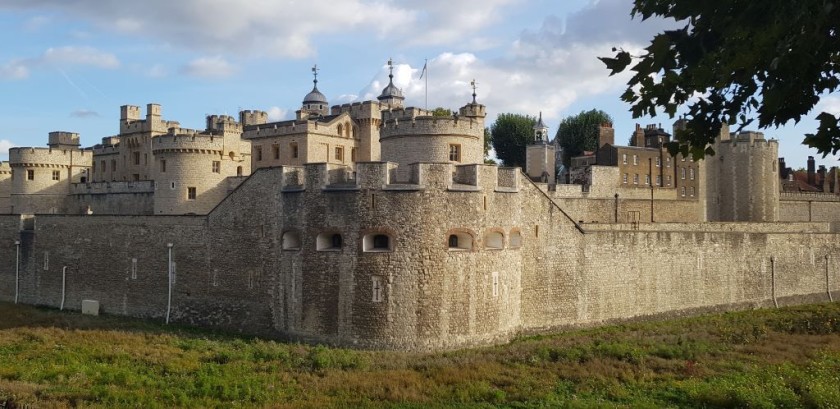
Take an eastbound Circle line train to Tower Hill station, as it is a few minutes walk from the main entrance into the Tower Of London.
to The Shard and Borough Market
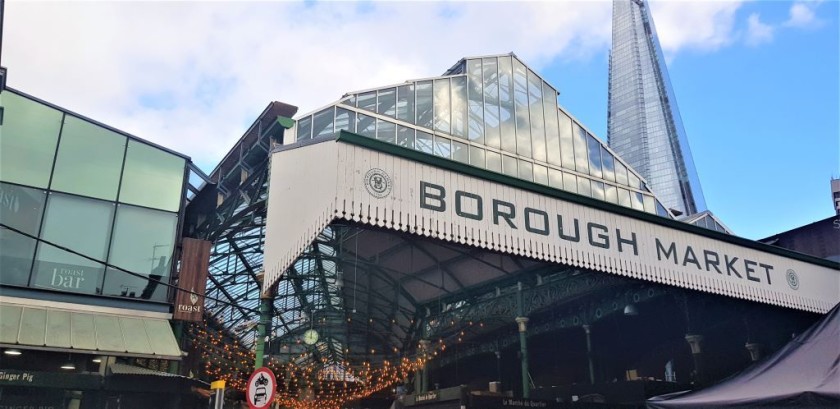
A clutch of tourist destinations are located in the London Bridge area including Borough Market (best experienced on a weekend), The Shard and HMS Belfast the south side access to Tower Bridge, plus the attractions in the adjacent Bermondsey Street area such as the Fashion and Textile Museum and The White Cube Gallery, plus on weekends, The Ropewalk.
The seemingly obvious route for a Liverpool Street to London Bridge transfer is to travel via Bank station on a combination of westbound Central line and southbound Northern line trains, but the transfer in Bank is comparatively awkward.
Or head to bus stop K on the street named Bishopsgate to board bus routes/lines149 and 388, as they terminate in front of the upper level entrance to London Bridge station.
to The Zoo and Madame Tussauds
Madame Tussauds is adjacent to Baker Street Underground station, it is on the next block, but taking the bus is the easiest means of reaching The Zoo.
The only bus route which stops right by London Zoo’s entrance is the 274
and at Baker Street it departs from bus stop C, take the bus heading to Angel, Islington.
To head to Baker Street from Liverpool Street go direct on any westbound Circle line or Hammersmith and City line train or Metropolitan line train.
to Westminster
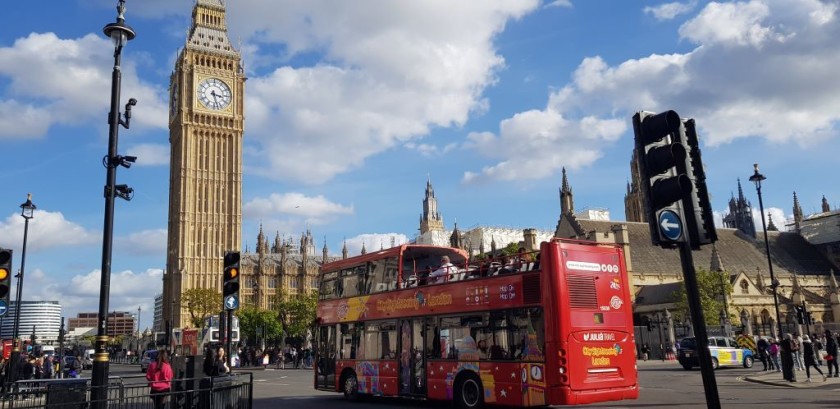
When heading to Westminster Abbey and the area around the Houses of Parliament from Liverpool Street take the eastbound Circle line to Westminster station, or take London’s most scenic bus route, the 26, which will be heading to Victoria.
to the Covent Garden area and The London Transport Museum

The Covent Garden area, which is where the London Transport Museum is located is now most easily accessed from Liverpool Street by taking the westbound Elizabeth line to Tottenham Court Road.
At that station a new exit on Charing Cross Road east is a 10-15 min walk to the market.
The simplest route is to head towards Shaftesbury Avenue and then turn left into Neal Street.
to Buckingham Palace
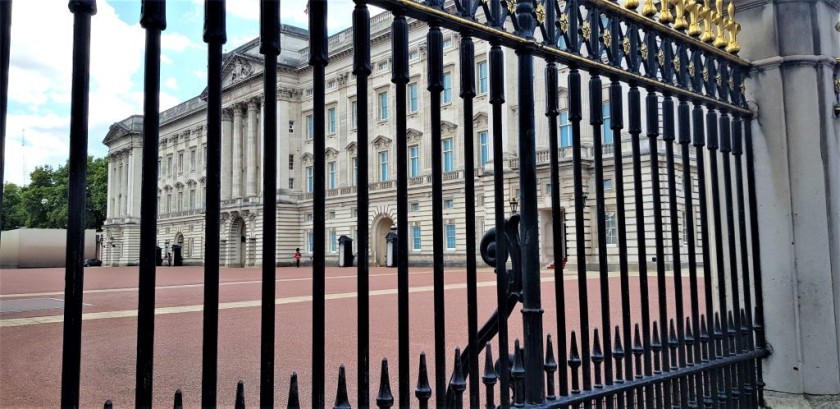
The entrance for the viewing of The State Rooms at Buckingham Palace is approximately an equal distance from Green Park and Victoria stations.
The eastbound Circle line is direct from Liverpool Street to Victoria, but Victoria station is on the opposite side of the city centre, so it’s an 11 stop journey and the Circle line trains aren’t particularly frequent.
So the quicker option is to take a westbound Elizabeth line train to Bond Street and connect there for a one station hop on the southbound Jubilee line to Green Park.
Unusually for a central London underground station, step-free access by a series of lifts (elevators) between train and street is available at Green Park, so this routing via Bond Street is also step-free.
to Greenwich

The historic center of maritime Greenwich is served by two stations:
- Greenwich station is served by mainline regular trains and is a 5 – 10 minute walk to the town centre.
- Cutty Sark station which is in the heart of the historic area ans is served by the DLR, a hyper people mover system, on which metro style trains travel on routes mainly above ground through the Docklands business area.
Though Cutty Sark station is below ground with escalators and a lift (elevator) up to street level.
North Greenwich station on the Jubilee line is in an entirely different location.
If you’ll be on a train which calls at Stratford, make the transfer there to a DLR train, though another transfer at Canary Wharf station is typically required.
If the transfer at Stratford isn’t an option, take the eastbound Circle line from Liverpool Street to Cannon Street station, to connect there for a Southeastern train to Greenwich; there are typically four departures per hour.
to the Sky Garden
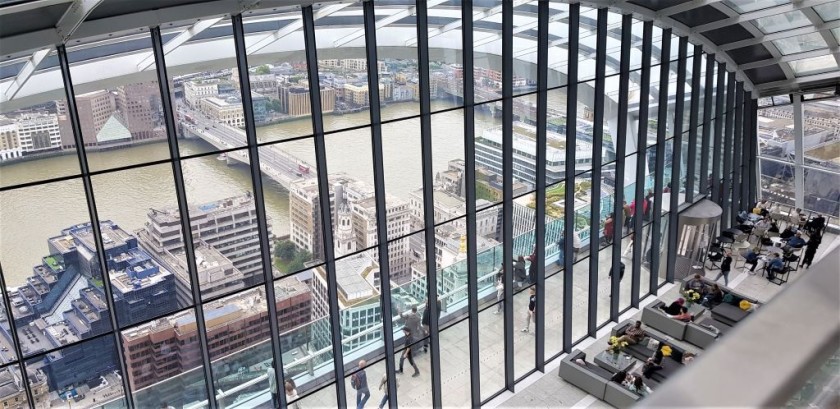
From Liverpool Street station it is a 15 – 25 minute walk to the Sky Garden or take a bus route 133 from the bus station above platform 1 and leave it at the Fenchurch Street stop.
to Somerset House
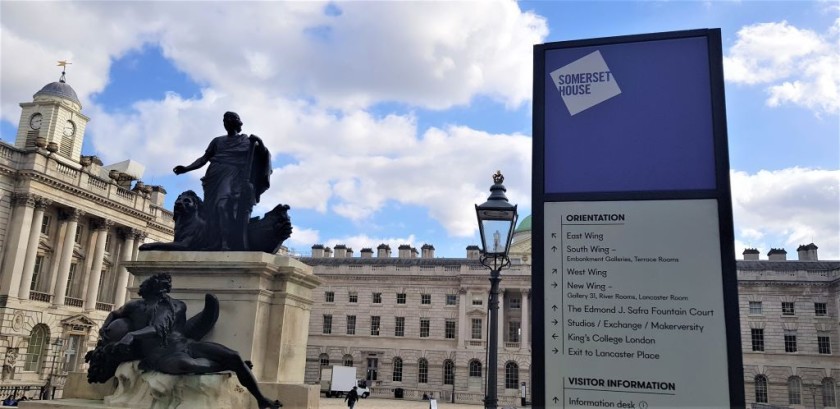
The fastest option for the journey from Liverpool Street station to Somerset House is to take the eastbound Circle line to Temple station, or take London’s most scenic bus route, the 26 to its stop named Aldwych/Drury Lane.
to Tate Britain
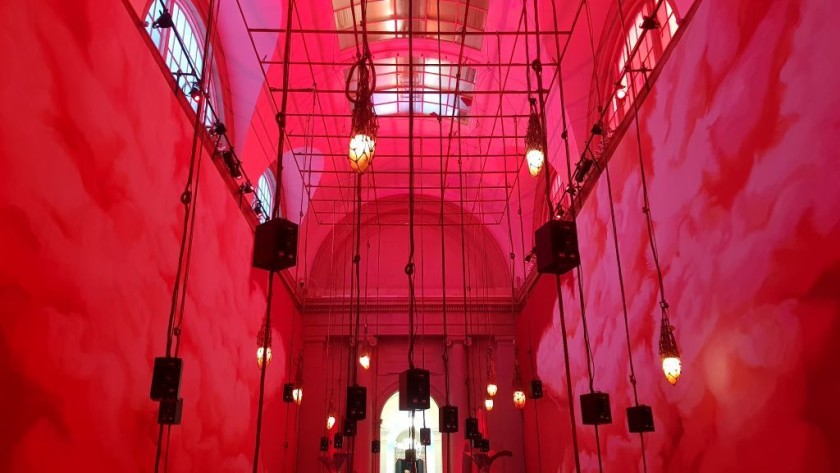
Take the westbound Central line to Oxford Circus and connect there for the southbound Victoria line to Pimlico.
Pimlico station is an 8 to 15 walk from Tate Britain, so take the southbound Victoria line
Then on arrival at Pimlico, head to the gallery's side entrance by crossing over Vauxhall Bridge Road on to John Islip Street and turning right into Atterbury Street.
Or if you would rather avoid the Tube, take the eastbound Circle line to Westminster and connect for bus routes 87 or 88 from the Parliament Square bus stop on Whitehall.
to Tate Modern
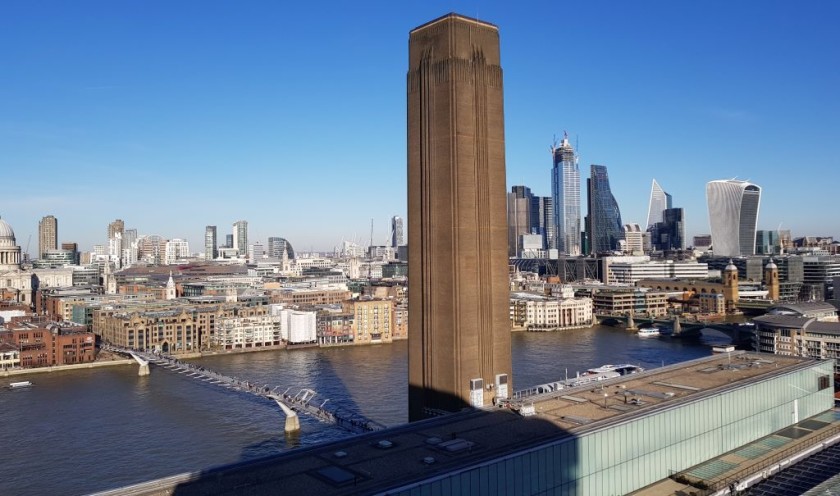
The route by train from Liverpool Street to Tate Modern is to take the westbound Elizabeth line to Farringdon, so that you connect there for a Thameslink train to Blackfriars.
On arrival there use the South Bank exit, because from there it is a three minute walk to the gallery's main entrance.
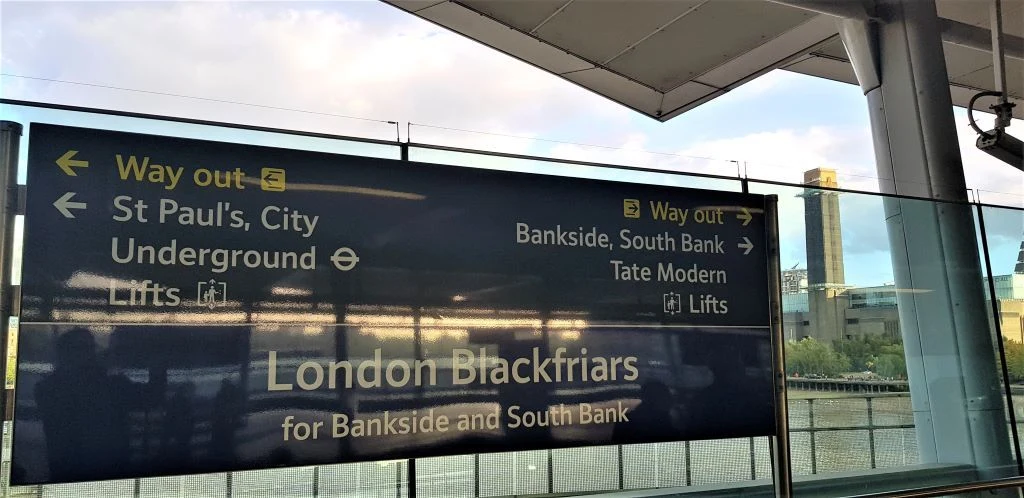
Or take bus route 26 from stop L on Bishopsgate and leave it at the St Pauls cathedral stop.
From the bus stop heads towards and then over The Millennium Bridge.
to St Paul's
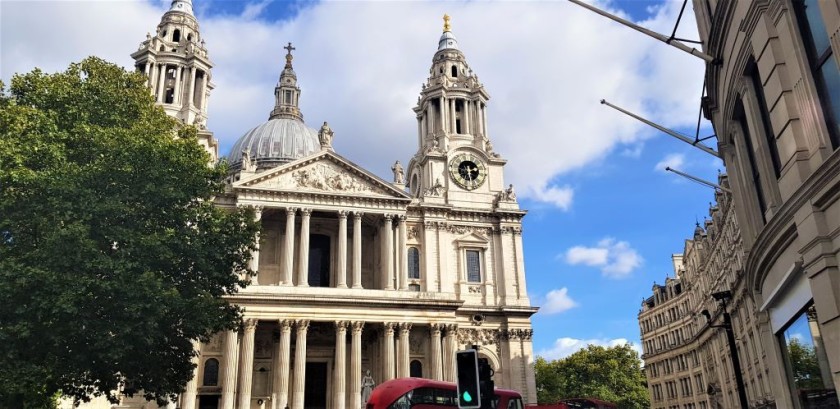
The quickest route to St Paul's cathedral is take the westbound Central line to St Paul's station.
Or if you would rather avoid going by 'the tube' take bus route 26 from stop L on Bishopsgate and leave it at the St Pauls cathedral stop.
to Kensington Palace

Kensington Palace is on the opposite side of the city center from Liverpool Street, but it's an uncomplicated journey, take the westbound Central line to Queensway station.
to Kew Gardens
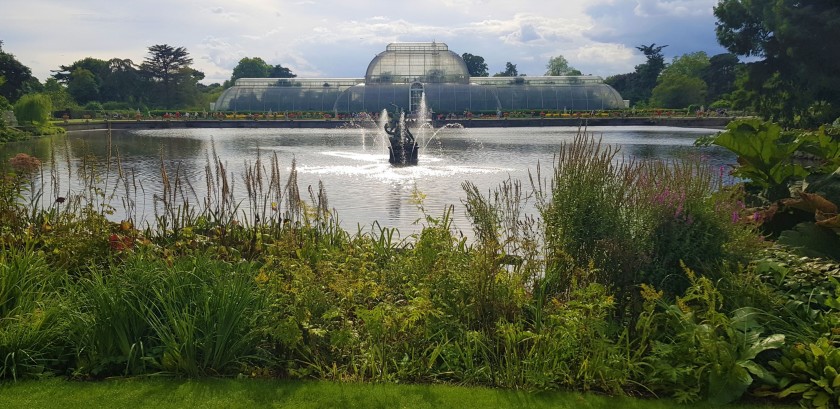
The Royal Botanic Gardens at Kew are on the opposite side of the city from Liverpool Street.
The transfer with only connection is to take an eastbound Circle line train to South Kensington where the transfer to a District line train to Kew Gardens station simply involves waiting on the same platform for a train heading towards Richmond to arrive.
However, it's a fairly long end-to-end journey with a total of 23 stops.
Though if your train heading to Liverpool Street will be calling at Stratford, a faster option is:
- Take the Jubilee line to Waterloo.
- From Waterloo board any train to Richmond, the fastest trains take only 15 minutes
- In Richmond station a step-free transfer is available into a District line or Overground train for a one-station hop to Kew Gardens.
This route is also step-free because the train from Richmond will arrive on the platform at Kew Gardens station, which is on the same side of the station as the gardens.
Summary of how the ticketing works
All of the ticket gates at central London stations have 'readers' which enable contactless payment.
Regardless of whether you are resident in the UK, or are visiting, there are three methods of using Contactless:
- A payment app on a mobile device, including your bank's contactless payment app, or the likes of Google Pay, Apple Pay, or Samsung Pay.
- A debit / credit card as long as it has the contactless symbol
- An Oyster card (you touch in and out as you do when using Contactless).
Good to know about using Contactless
- The system works by touching in and out.
- When using bank cards, take care to use the same card when touching out at the end of a journey, as you did when touching in at the start.
- You have to pay with Contactless on the regular red buses, you cannot pay with cash.
- When travelling by the Underground or Elizabeth line, you can save 10 - 20p per journey by paying with a banking app / card instead of an Oyster card.
- Making a Contactless payment is cheaper than buying a ticket from a station counter or machine - the price difference is usually at least 50%!
More info is available on the general London by train guide.
Using rail tickets to obtain 2-for-1 entry to visitor attractions:
National Rail, which has overall responsibility for how the trains are managed in Britain, has teamed up with a swathe of tourist attractions for a promotion which allows two entry tickets for the price of one when travelling to and from them by train.
How it typically works is:
- You can look for which attractions and guided tours are members of the scheme on the National Rail website.
- Having chosen an attraction you can then see how to book the special promotional tickets or voucher; when needed you can find promo codes on the dedicated page for each attraction on the National Rail Website.
- On the online booking page of the attraction you should see an option which corresponds to 'National Rail - Two for One offer'.
- Book your attraction tickets or voucher.
- On arrival at the attraction you present your attraction tickets and rail tickets to gain entry.
The offers are available to visitors to the UK as well as residents, so they can be a great way to save money when on a holiday.
Though what's good to know is:
- You need to present either the outward or return part of a national rail ticket to gain entry, along with your attraction tickets; So Oyster Cards and other Contactless payments, or Travelcards can't be used for the rail journey!
- The ticket machines at stations will retain one-way tickets, hence return tickets are a must - and if possible avoid putting your outward tickets through the machine, by asking the staff to open the gates/barriers.
- The two people entering the attraction on the 2-for-1 offer will both need separate rail tickets.
- The type of rail ticket, how much you paid for it and the distance travelled all don't matter, any pair of return rail tickets will suffice.
- If you have one, you can use Railcards to book the rail tickets.
- Rail tickets are available as an alternative to Oyster cards when travelling between any two National Rail stations in the Greater London area; a National Rail station is any station not solely served by the Underground or DLR, so it includes stations solely served by the Overground or Elizabeth Line trains.
Therefore you can buy return rail tickets to a central London station, or to a station located by an attraction, from another station in the London area.
However before booking the 2-for-1 offers on the attraction websites, carefully check how much you will be saving by only paying one entrance fee, compared to the costs of booking two rail tickets.
If you look up the journey on the National Rail website you'll get a good idea of the train ticket costs.
It's likely you won't be able to claim a refund on the attraction tickets, if you then decide not to go ahead, because the rail tickets + the 2-for-1 offer won't save you money.
Though it's highly likely you will make a substantial overall saving.
But if you have already booked two return rail tickets and then find an attraction(s) that you want to visit, go ahead and book the 2-for-1 offer, as you'll then be certain of saving money!
Where can you go and what can you see
The full list of tourist attractions participating in the scheme can be found on the National Rail website.
Popular attractions in central London include:
- Westminster Abbey
- St Paul's cathedral
- the London Transport Museum
- The London Eye
- The Tower Of London (certain times of year only)
Attractions in the wider London area, with easy access from local rail stations, include:
Attractions which are an easy day trip from London include:
- The Bluebell Railway; very easy connection at East Grinstead station.
- Steam - The Museum of the Great Western Railway
- There's a clutch of attractions in Brighton including:
the charming Toy and Model Museum and The Royal Pavilion and Sea Life Brighton - Chessington World Of Adventures which is walkable from Chessington South station, which has trains from London Waterloo.
- Thorpe Park which can be accessed by taking a train from London Waterloo to Staines and then connecting into a bus service.
- Legoland Windsor which can be accessed by taking buses from central Windsor that offer straightforward connections with trains from London Paddington and trains from London Waterloo.
Though carefully check the full details for the amusement park offers as they exclude certain dates and periods of time, which tend to coincide with school holidays.

Simon Harper
I wanted to share my passion for train travel and explain how anyone can take the fantastic journeys I have taken.

This is one of more than 100 train travel guides available on ShowMeTheJourney, which will make it easier to take the train journeys you want or need to make. As always, all images were captured on trips taken by ShowMeTheJourney.
This second version of ShowMeTheJourney is exciting and new, so we are genuinely thrilled that you are here and reading this, but we also need your help.
We’re striving not to let anything get in the way of providing the most useful service possible, hence a facility has been set up with DonorBox which can be used to support the running costs and make improvements.
Instead of advertising or paywalls, your financial support will make a positive difference to delivering an enhanced service, as there’s a lot of ideas which we want to make happen.
So if you have found the info provided here to be useful, please consider saying thank you.




